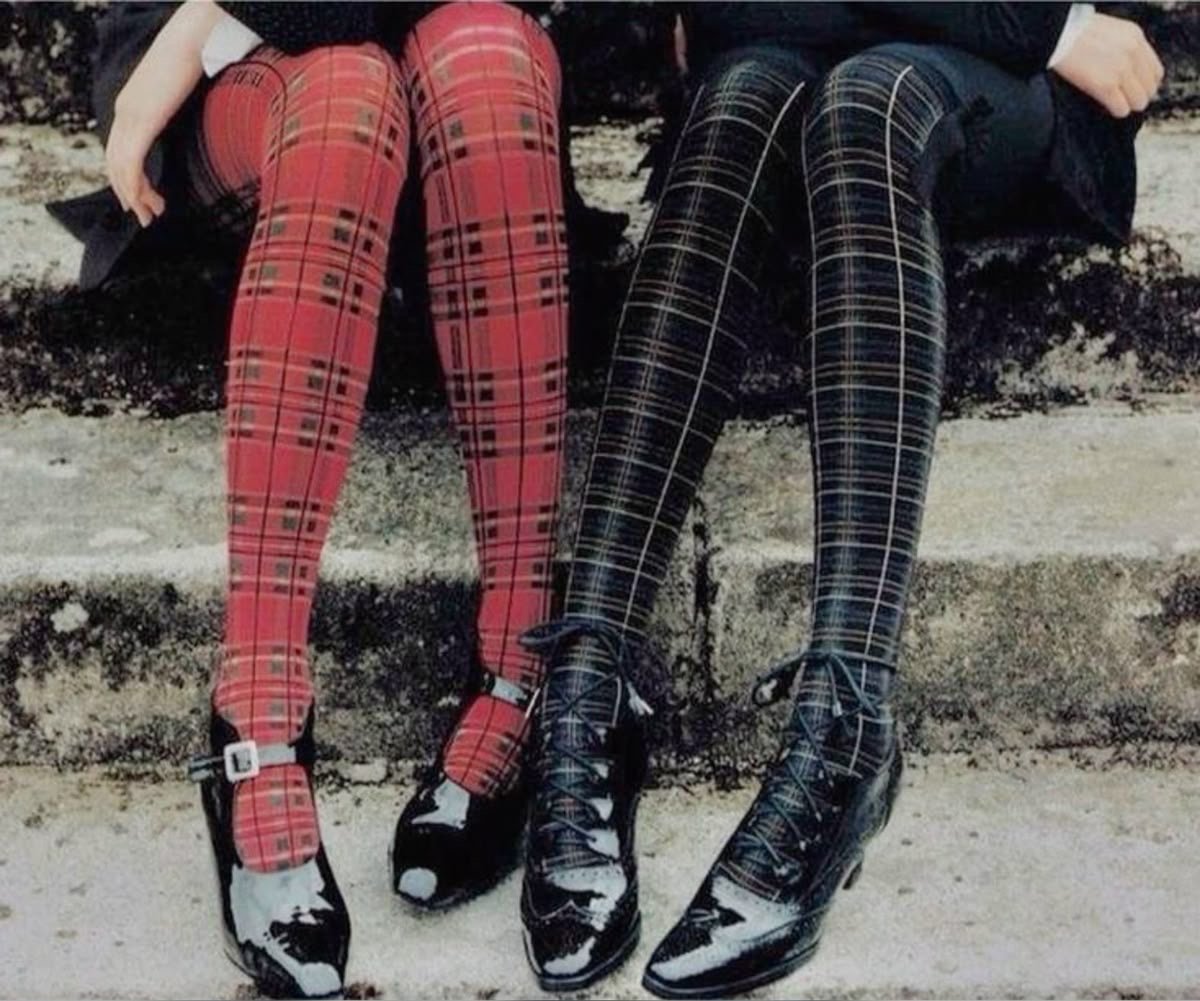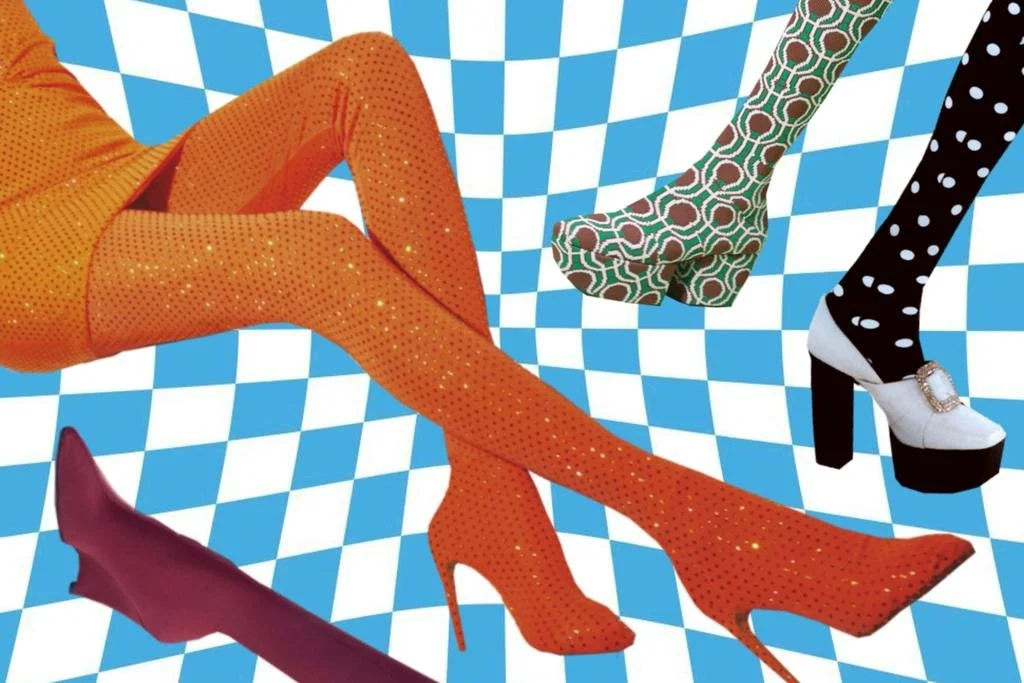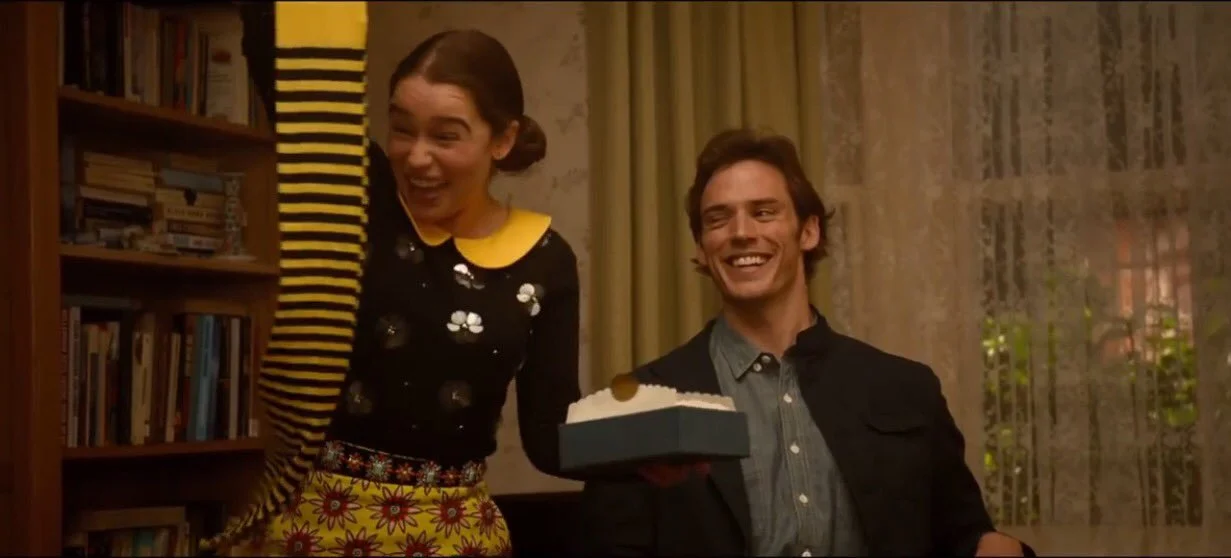A (Good) Case of Stripes: The Funky Tight Movement
Most have a love/hate relationship with tights. Putting on a pair of nude tights under a dress is a hassle, involving jumping around one’s room like a fish out of water. However, when tights become a necessary part of one’s curated outfit, that hate fizzles away. Today, there has been a reemergence of these leg accessories as the focal point of an outfit, moving away from the minimalistic, monochromatic format of tights that most have grown up with.
Tights were created in 1803 as a replacement for the petticoat. They were thought to provide warmth to women while promoting modesty and allowing women to wear dresses year-round. This idea of a modest tight was hijacked (for the better) in the 1960s. British designer Mary Quant pioneered colorful tights to accompany mini skirts and hot pants. Hot pants were a 1960s form of the micro-short—short shorts common in women’s fashion, also designed by Mary Quant. Quant’s colorful pantyhose were seen as a sign of youthfulness and freedom, directly juxtaposing the modest origin of the clothing article and establishing that different periods can shape the notions associated with specific clothing pieces. Moving on to the 1970s, the patterned, funky tights as we know them today began their crusade into women’s fashion. Icons, including Madonna, flaunted these funky leg accessories on stage and in everyday wear.
So, how and why have funky tights come back into fashion? The short answer? Fresh designers are breaking into the fashion industry, and these young designers are drawing on the inspiration they consume in the media. Gen Z designers, specifically, have been surrounded by media for as long as they have been alive. Consuming books, movies, TV shows, and a plethora of other entertainment styles, it’s no wonder that the patterns Gen Z has grown up with are reemerging in the fashion industry. Take the book A Bad Case of Stripes (1998), a childhood staple for the generation of 1997-2012. This work featured a girl who developed stripes due to her inability to stay true to herself, causing her to morph into a girl with stripes and eventually inanimate objects. The popularity of this short story has soared beyond its target audience, with Gen Zers dressing as the protagonist for Halloween, all for the sake of nostalgia.
Another media piece contributing to the inspiration of young designers is the movie Me Before You (2016). This movie featured a bubbly protagonist named Louisa “Lou” Clark, the caretaker of a man paralyzed in a wheelchair. And while I won’t go into the emotional trainwreck this movie has put through every person who has watched it, I will explain the importance of the tights. In the film, Lou is gifted a pair of yellow and black striped tights, resembling a beloved old pair from childhood. Her youthful excitement, jumping up and down and squealing with joy when opening said gift, is exactly what the funky tight movement is about. Being free and youthful, allowing oneself to wear what brings them joy, is what fashion should always be about.
Funky Tights, along with all fashion, are products of everything the designer has consumed that may inspire them. In terms of the contemporary funky tight movement, the inspiration would be iconic media, such as A Bad Case of Stripes and Me Before You. These stories within media have stuck with designers, inspiring them to create expressive pieces that empower consumers to feel beautiful in embracing these bold fashion statements.
Strike Out,
Writer: Sophie Palmer
Editor: Emily Montarroyos
Tallahassee



